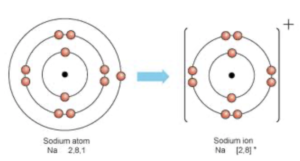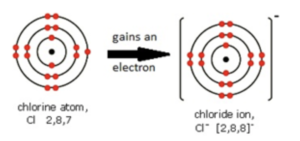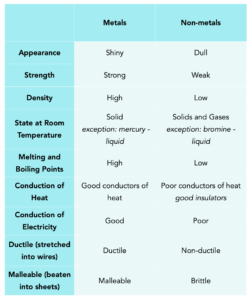Metals & Non-Metals (GCSE Chemistry)
Metals & Non-Metals
Formation of Ions
Ions are formed from atoms when electrons are transferred between atoms:
- A positive ion is formed when an atom has lost electrons, after which it contains less electrons than protons. Atoms of elements that react to form a positive ion are metals.
- A negative ion is when an atom gains electrons so it contains more electrons than protons. Atoms of elements that react to form a negative ion are non metals.
Let’s take sodium and chlorine as an example. When sodium reacts with chlorine, it losses the outermost electron and becomes a positively charged sodium ion. This suggests that sodium is a metal.

Fig 1. Sodium ion formation. Sodium atoms have one electron in their outermost shell with an electron configuration of 2,8,1.
When the sodium atom loses the electron in the outermost shell it becomes a sodium ion. The ion now has 2 full shells and has a positive charge. The electronic configuration is now [2,8]+
When Chlorine gains the electron lost by sodium and becomes a negatively charged chloride Ion. This suggests that chlorine is a non metal.

Fig 2. Chloride ion formation. Chlorine atoms have 7 electrons in their outermost shell with an electron configuration of 2,8,7.
When the chlorine atom gains the electron in the outermost shell it becomes a chloride ion. The ion now has 3 full shells with a negative charge. The electronic configuration is now [2,8,8]–
Properties of Metals and Non-Metals
Metals and non-metals have different physical and chemical properties. Below is a table that summarises these main differences

Metals as Conductors
Metals are good conductors of both heat and electricity because they contain delocalised electrons which are free to move around. Delocalised electrons can carry current, throughout the structure of the metal, as well as transfer kinetic energy between themselves.





Still got a question? Leave a comment
Leave a comment